Kyoto--Torii and Sake and Bullet Train Rides
On our second day in Kyoto, and third day of our overland, we visited the 1000 Torii Shrine, met a sake master, and sampled his sake. We then rode the bullet train to Tokyo and re-joined the Mariner.
From the itinerary: Following breakfast at the hotel and check-out, you will visit Fushimi Inari Shrine, which is famous for its thousands of vibrant, orange torii gates along the wooded hiking trail that leads to the top of Mount Inari. The names of the donors who funded the torii gates, which are dedicated to the deity of good harvest and success in business, are inscribed on them.
Fushimi Inari Shrine was built in the 8th century and dedicated to the god of rice and sake. The grounds were lovely—gardens, small shrines, and fox statues everywhere. This map helped us get oriented, although it is one of the easier shrine compounds to get around. Just follow the path through the hundreds of torii gates. When you’ve walked as far as you wish, turn around and leave through the exit set of torii gates.
Foxes are believed to be messengers of the god of grain, Inari, and these stone foxes are known by the same name. This fox is carrying a sheaf of grain—the symbol of a plentiful harvest. This fox’s red bib indicates he is protected from evil spirits—they won’t approach the color red.
The vermillion-colored torii gates are part of the Shinto belief system and are believed to separate the sacred world from the material world. These gates are typically made of wood and painted orange-red, which is believed to ward off evil spirits and preserve the wood. One bows as one walks through the gate, acknowledging the transition from the outside world to the inner, or sacred, world of the shrine.
The main attraction of this shrine is the seemingly endless path of orange torii gates leading up the mountain. It does get a bit mesmerizing, tromping through these closely spaced gates in the company of hundreds of closely spaced people.
I didn’t even recognize that I’d begun to focus on the people in our group who were in front of me, following them, winding in and out of the people traffic to keep up with the group. I’d lost sight of the real reason we were here—to experience walking through hundreds of sacred torii. Once I realized this tendency to “follow the herd,” Sherpa and I slowed down, recalibrated, and continued more mindfully.
Individuals and companies donated these gates, and their names are inscribed on the back. A donation to erect a torii gate ranges from 400,000 to 1 million yen. (about 3000 to 8000 USD)
Small brooms were attached above many door frames, the Shinto symbol for cleansing the space and welcoming good fortune.
Walking back to the bus from the shrine, we passed what our guide said was a typical Japanese cemetery, characterized by a vertical presence rather than the horizontal stones found in Western cemeteries.
From the itinerary: After visiting the shrine, you will enjoy a behind-the-scenes sake brewery tour and be offered a tasting of this quintessential Japanese spirit.
A cedar ball hung in front of the Sake Brewery, a small storefront on a narrow alleyway.
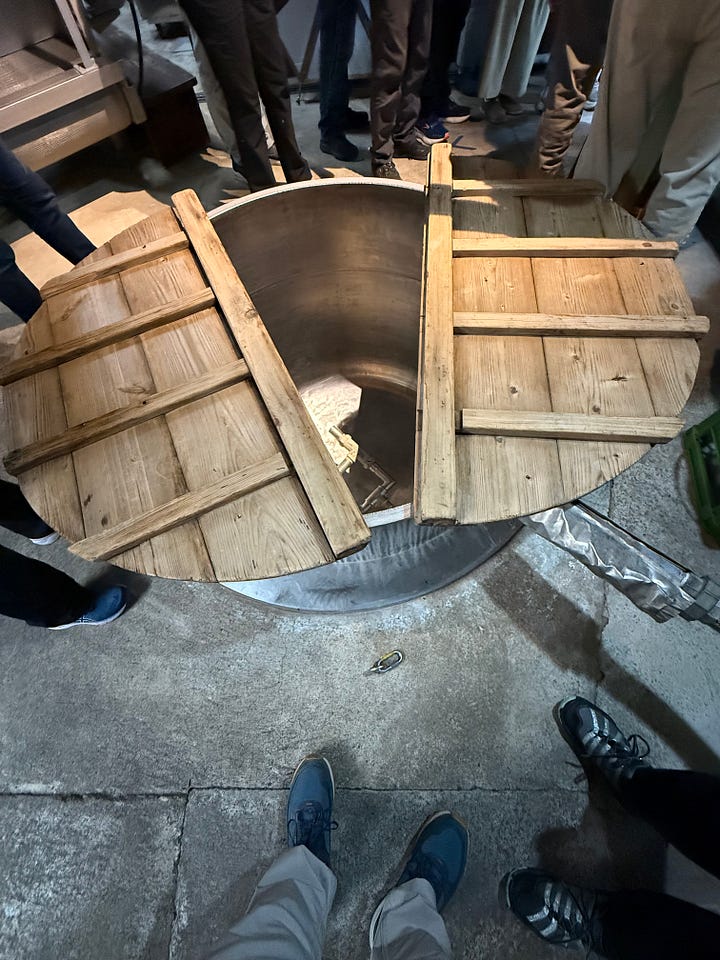
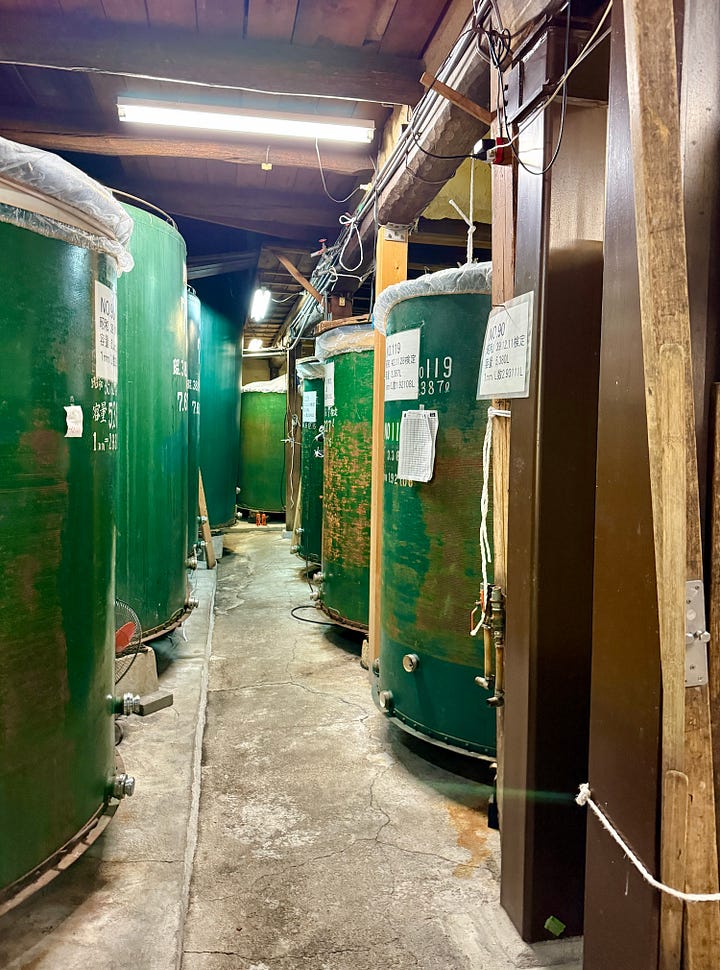
The sake master gave us a tour of the brewing facility and then took us to the second floor for a Sake tasting.
We each tasted three kinds of sake — Jurakudai, Nishijin, and Ginjo. The group at our table preferred the first sake, which was an aged sake.
Many of our group, including Sherpa, purchased sake and T-shirts from the small brewery shop. Maybe he will write a sake review instead of his usual beer review. I got a Goshuin stamp for my book, and they offered it to me “as a gift” even though the price was marked at the typical 300 yen. It was very kind, but then, the Japanese people seem to be very kind.
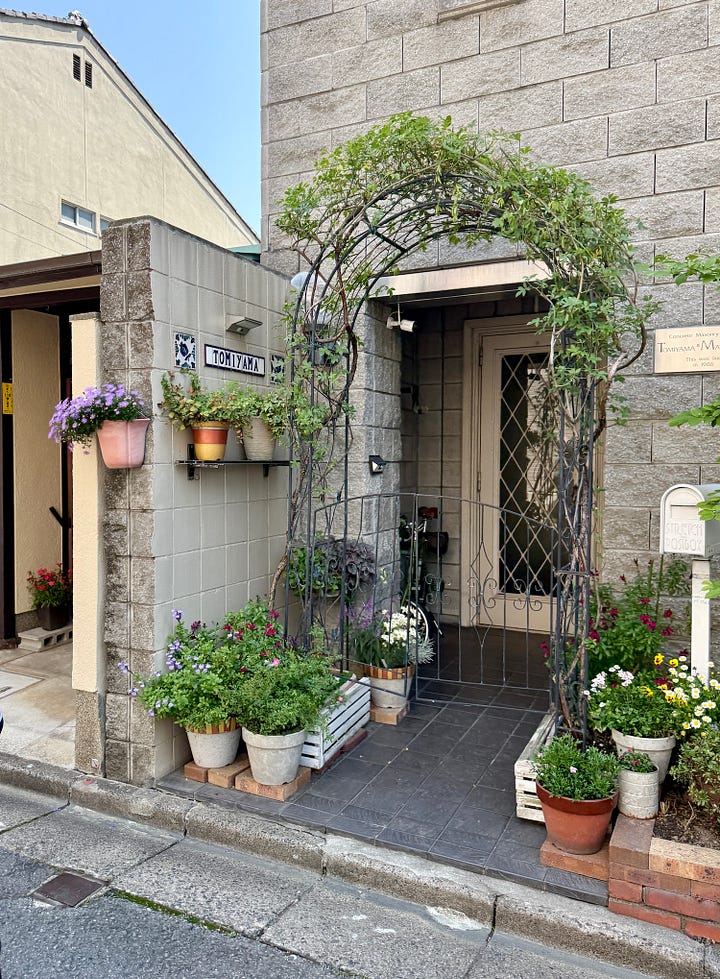
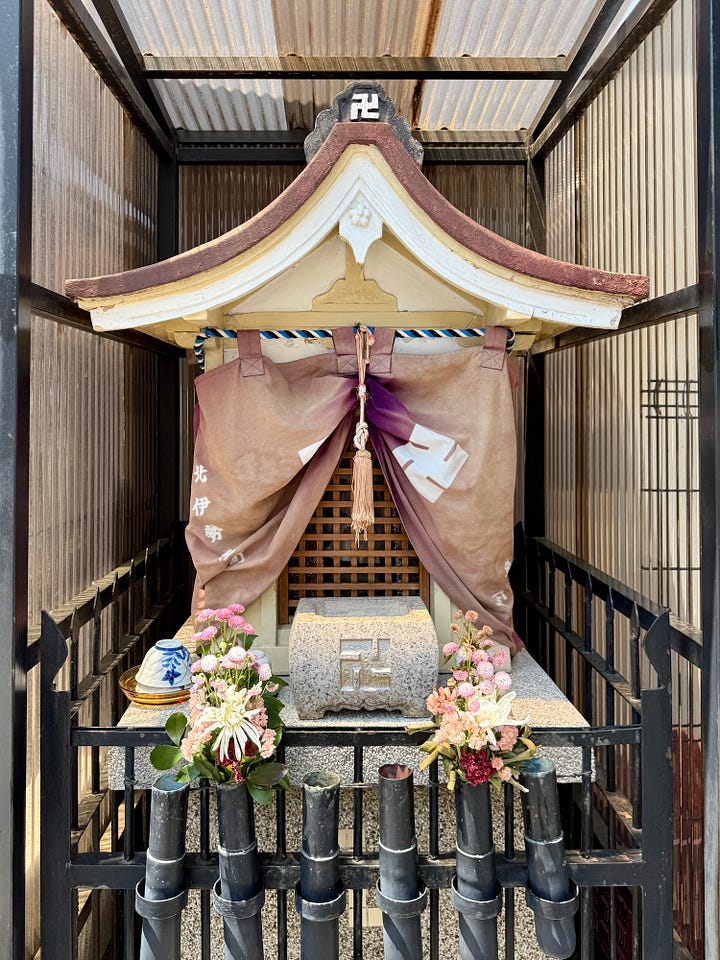
While returning to the coach, we walked along a narrow street and briefly caught a glimpse of a “slice of life” from a few typical Japanese homes and businesses. Miniature container gardens adorned the front spaces of many of the residences, and shrines were set up in small niches. Everything was orderly and well-maintained.
There were a few oddities along the way, including this pokey-grill attached to a large plastic container, a seemingly effective way to keep people from sitting where they were not welcome.
From the itinerary: You will then ride in Green Class on the Shinkansen, known familiarly as the Bullet Train for its high speed and sleek design. It can travel up to 150 mph, dramatically reducing the time it takes to reach Tokyo. A bento box is included for the journey.
We arrived at Kyoto Station as scheduled and had plenty of time to walk around, browse the gift shops, and explore the food stores. School groups were also waiting for their train—each group was squatting in this orderly fashion. I’ve never seen anything like this anywhere else in the world.
Mimi-san coordinated the transfer of the boxes of our lunches and water with the train attendant. She was an excellent lead guide; we always felt well-informed and taken care of. She effortlessly managed our group of 33 and effectively “read the room,” switching gears when our energies or attention waned.
We had Green Class seats on the bullet train, which are first-class seats. There was plenty of space, the seats were comfortable, and the large windows offered excellent viewing. The 2.5-hour train ride was exceptional—a smooth ride as we raced through the countryside.
Our bento box! What luncheon surprises does it hold?
Voila! Lunch! Some of the included delicacies (according to Sherpa) were:
Top left: three types of sticky rice rolls, seaweed, and chopped ginger.
Top center: tofu, vegetable spring roll, squid, snow peas, shrimp, a tofu star, and squash.
Top right: rice, sliced lotus, fish roe, and shredded cheese
Lower left: roasted pork slices, three types of tofu, and fermented soy roll
Lower center: tempura vegetables and shrimp
Lower right: baked mackerel, sushi, rice noodles, and a plastic fish containing soy sauce.
Sherpa enjoyed the mysterious contents in his bento box and even mastered the art of eating with chopsticks (out of necessity!)
Once we arrived in Tokyo, we were chauffeured from the station to the cruise terminal. We reboarded the Seven Seas Mariner around 4 PM, happy to be back on the ship, so we could put our feet up and rest for a while.
Sherpa and I reflected on our 3-day, 2-night Ancient Capitals overland trip a few days after our return. Some thoughts:
Highlights:
This was an excellent introduction to Nara and Kyoto. We saw the highlights of each city, though quickly. However, this whetted our travel appetites to return for a more in-depth visit.
A mix of walking tours and hands-on experiences made the excursions more engaging. Of the four experiences—Nara deer feeding, sumo wrestling demo, Zen meditation instruction, and sake tasting—we enjoyed each one. We found all of them informative, although I found the deer feeding and the Zen meditation to be the most interesting. Sherpa most enjoyed the Zen meditation and the sake tasting.
The Thousand Kyoto Hotel was a first—class urban hotel, conveniently located near trains and restaurants.
Our guides were extraordinary. Having two guides and an assistant for our group of 33 travelers, with a mix of physical abilities and interests, was ideal. When preferences differed, it was easy to break the larger group into smaller sets. The pacing of activities, while hurried, was reasonable for the number of places we visited.
Possible Improvements:
The meals were somewhat repetitive. A missed opportunity—many of us would have loved a Japanese steakhouse experience. The Italian Japanese dinner may have been the least appreciated.
Since we were eating foreign food, I would have greatly appreciated a little chart with the bento box on the train telling us what we were eating. We could have also used more guidance during our first evening’s dinner during the hot pot cooking experience. (Later, we found out we’d done it wrong, so we didn’t get the flavors we might have if we’d known more.)
We rated the overland as follows:
DAY 1
Ancient Capitals Overland--Nara, Japan and the Sacred Deer
On our second morning in Osaka, Sherpa and I, along with thirty-one other guests, disembarked from the Seven Seas Mariner to begin our three-day, two-night overland excursion, "Ancient Capitals." We met our two guides, Mimi-san and Yumi-san, and their assistant. Then we were on our way!
Kasuga Taisha shrine in Nara Park: 4/5
Deer Park and deer feeding experience: 5/5
Todaiji Temple visit: 5/5
Lunch at Shisui Hotel in Nara: 4/5
Sumo demonstration at Kehaya-za Sumo Pavilion: 4/5
A Thousand Kyoto Hotel: 5/5
Dinner (hot pot): Sherpa gave it a 4/5; I gave it 3/5
DAY 2:
Kyoto, Japan--Temples and Gardens, Zen Meditation, and a Bamboo Forest
We spent the day in Kyoto on the second day of the three-day, two-night overland to Japan’s Ancient Capitals.
Buffet breakfast at the hotel: 4/5
Kinkaku-ji Temple (Golden Pavilion) and Gardens: 5/5
Gardens of Tenryu-ji Temple: 5/5
Meditation session at Tenryu-ji Temple: 4.5/5
Bamboo forest walk: 5/5
Tenryu-ji vegetarian lunch: Sherpa gave it 4/5; I gave it 3/5.
Kiyomizu-dera Temple: 5/5
Shopping on Kiyomizu Zakat: 4/5
Sherpa and my independent visit to Beer Bar Miyama 162 brewery: 10/5!
Hotel Italian-Japanese dinner: Sherpa gave it a 3.5, and I gave it a 2/5.
DAY 3:
Fushimi Inari Shrine (1000 Torii Gates shrine): 5/5
Sasaki Sake Brewery tour and tasting: 4.5/5 (Sherpa) and 4/5 (Bo)
Bullet train ride: 5/5
Bento box on train: 5/5 for the experience
Return to ship: 5/5
Overall rating for Overland Excursion: 4.75/5! Highly recommended if you don’t mind a non-stop pace.

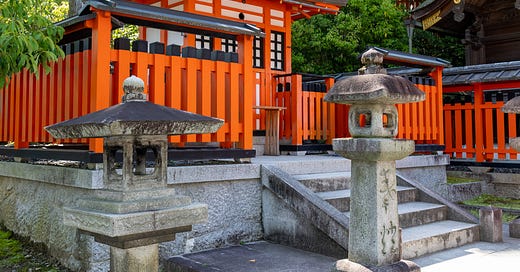



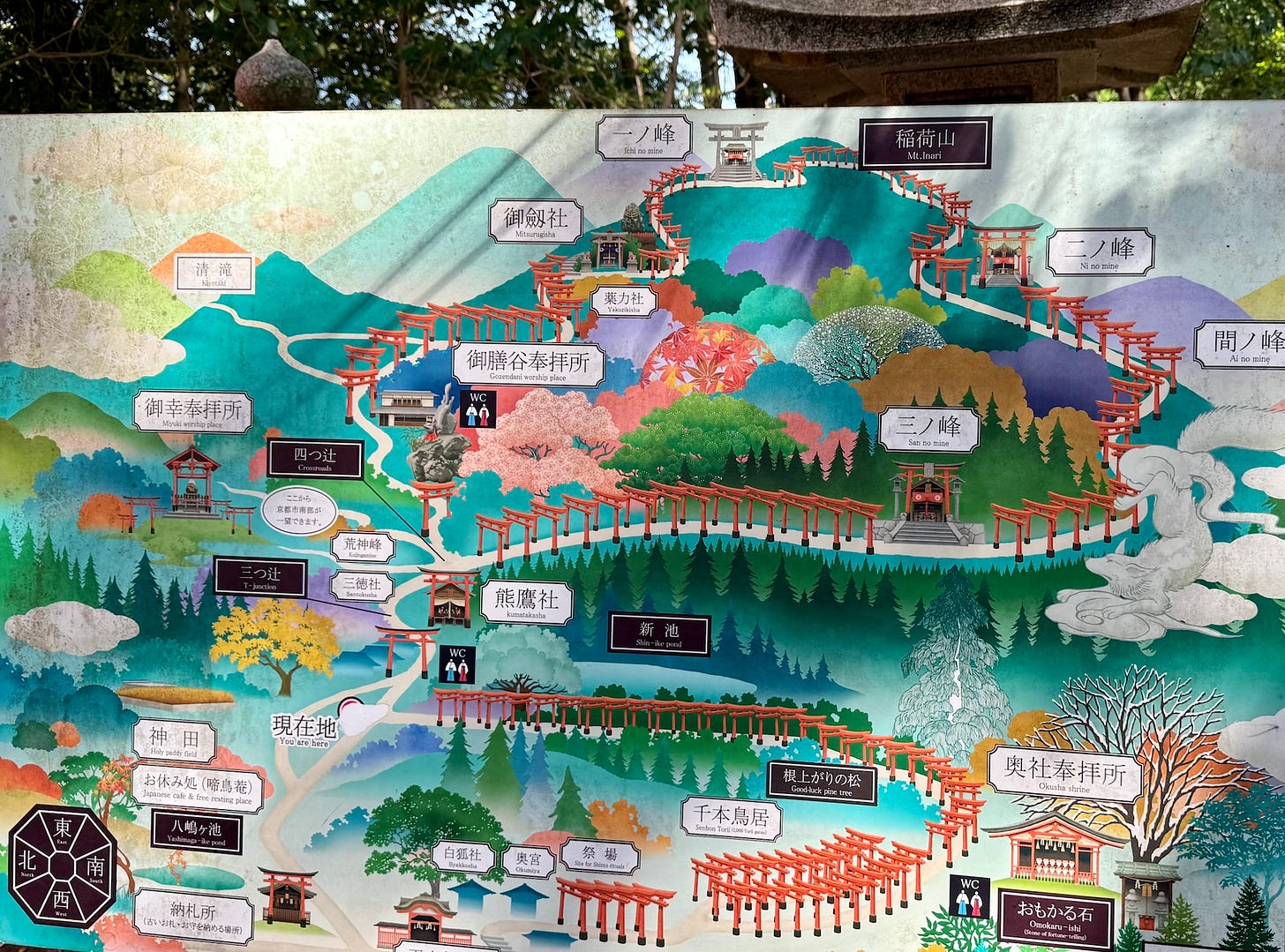
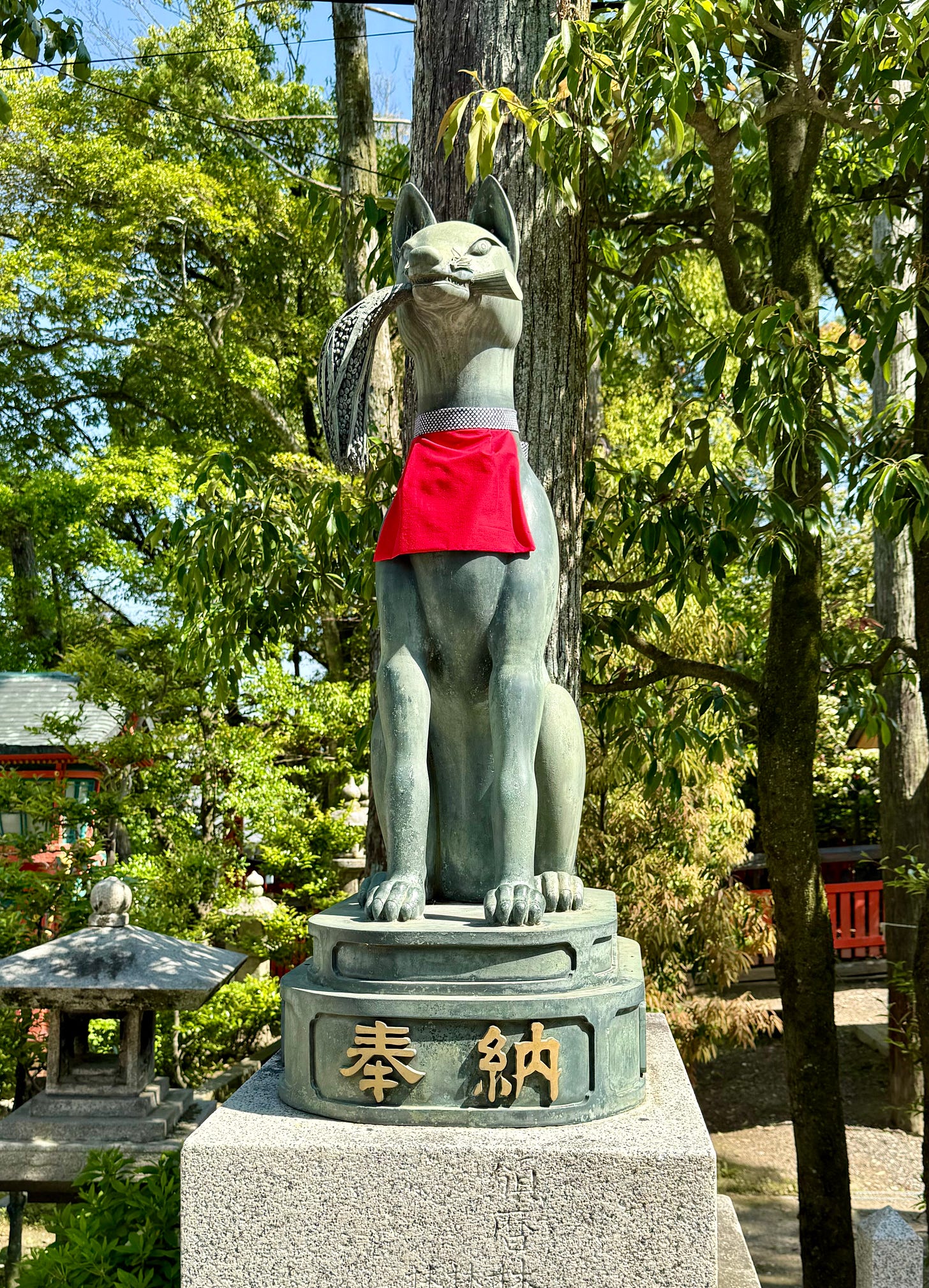
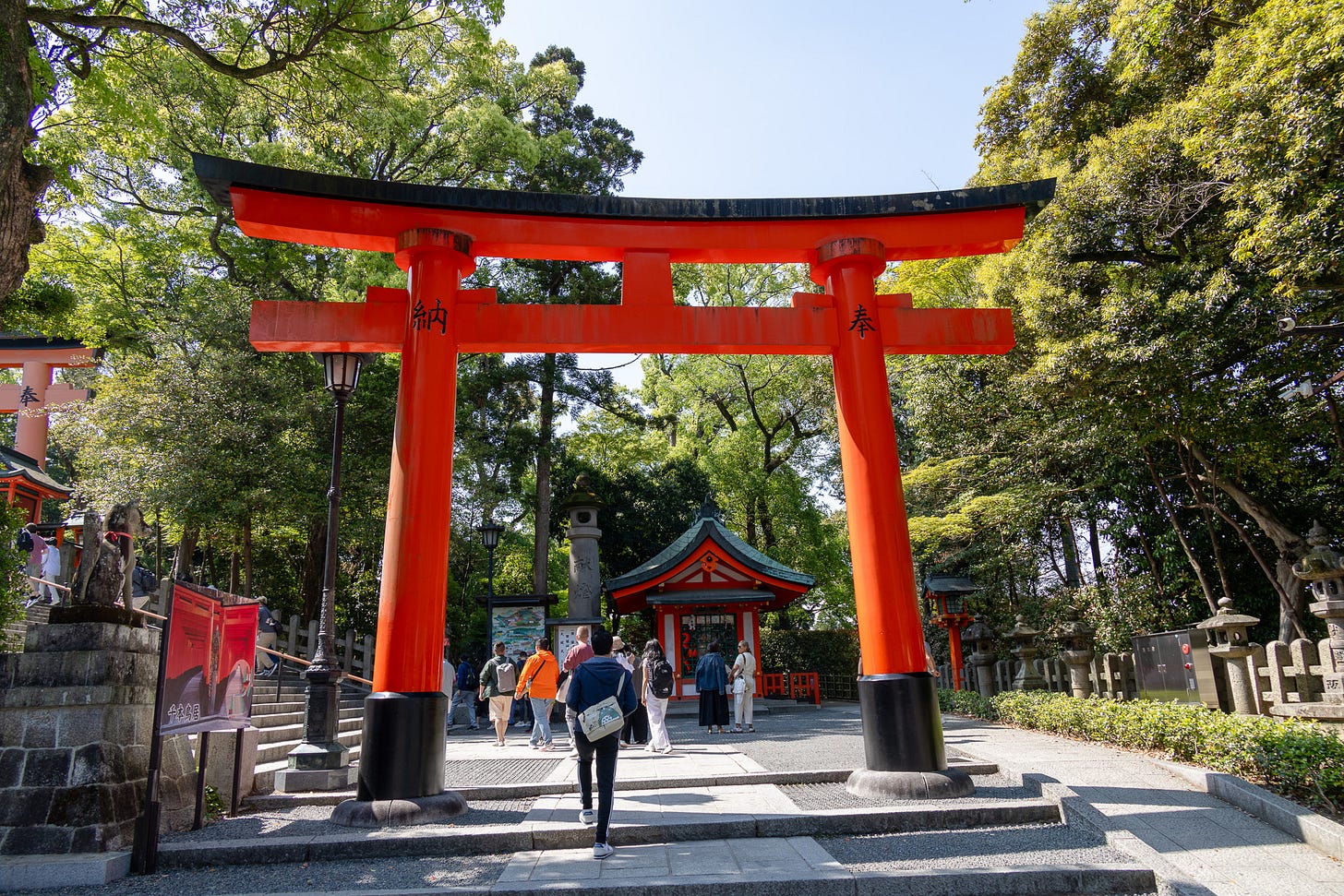
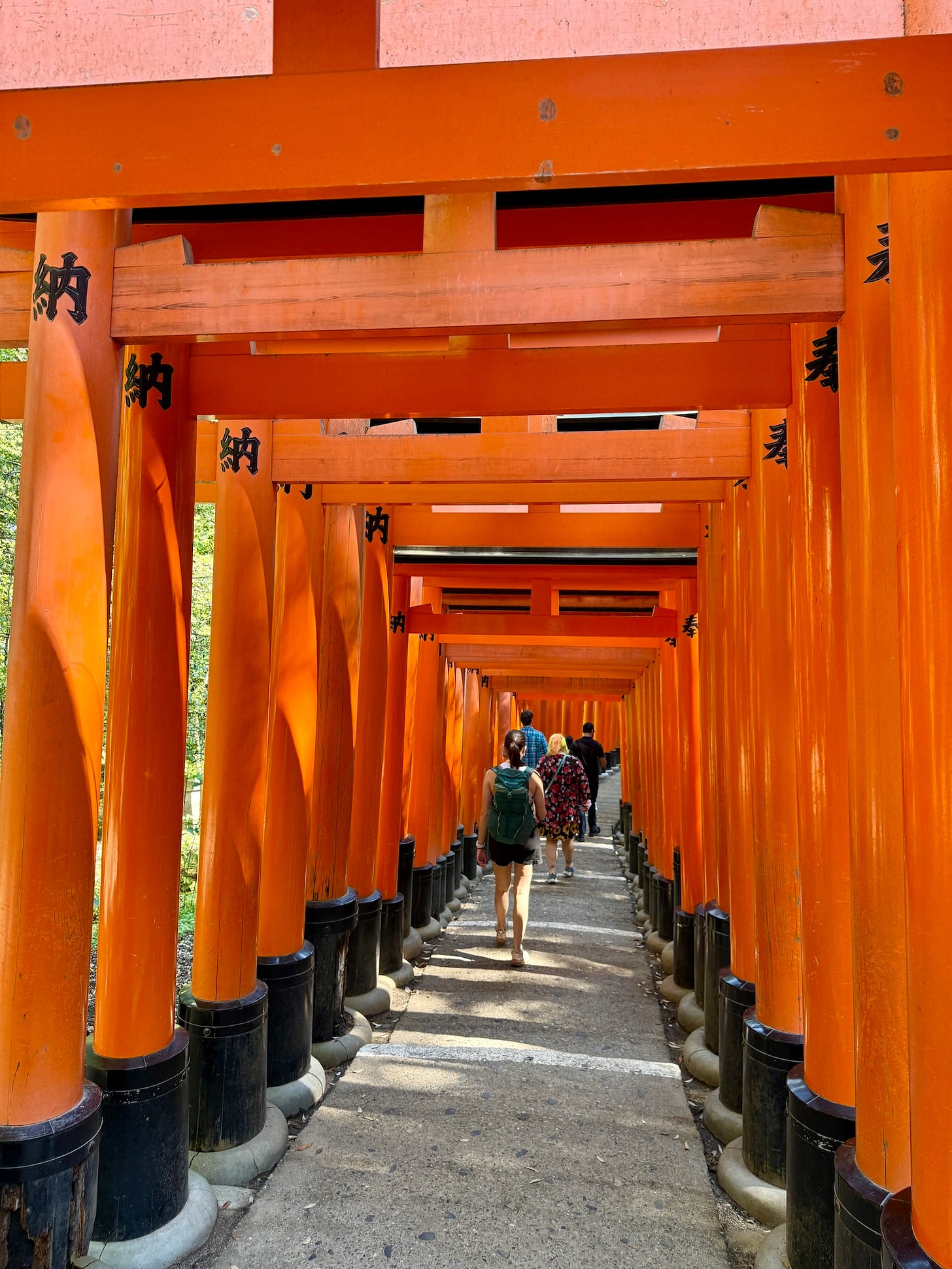
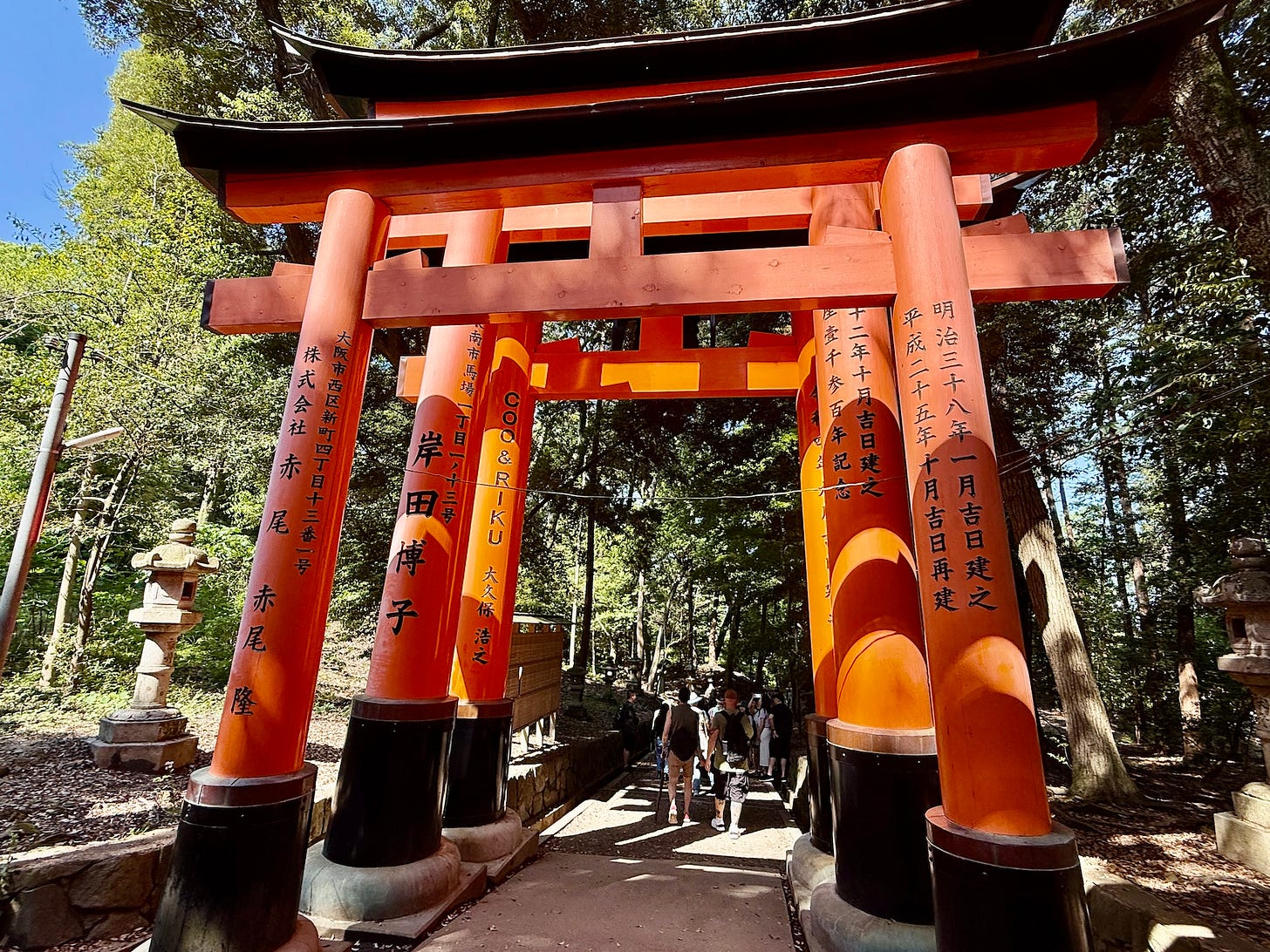

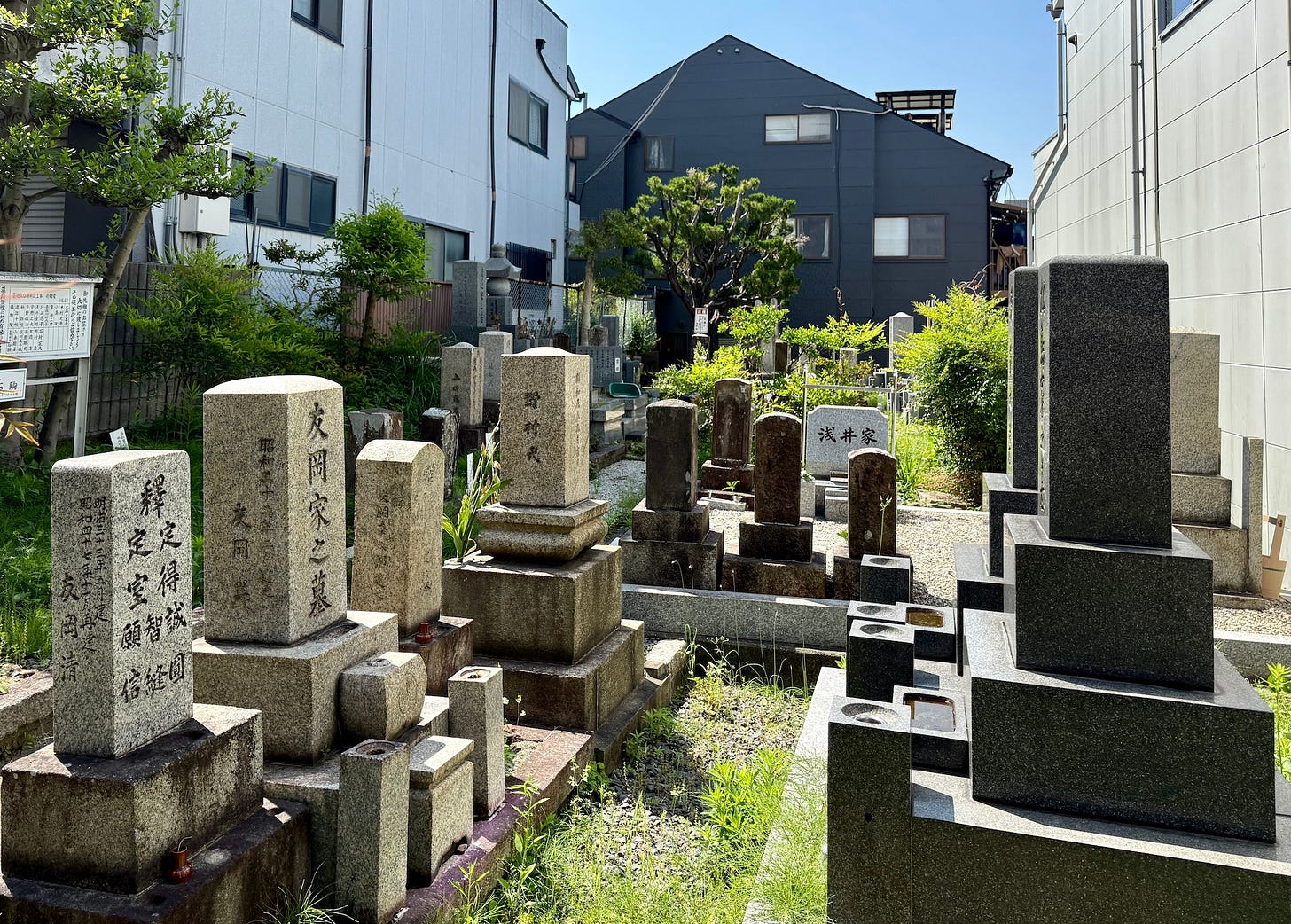
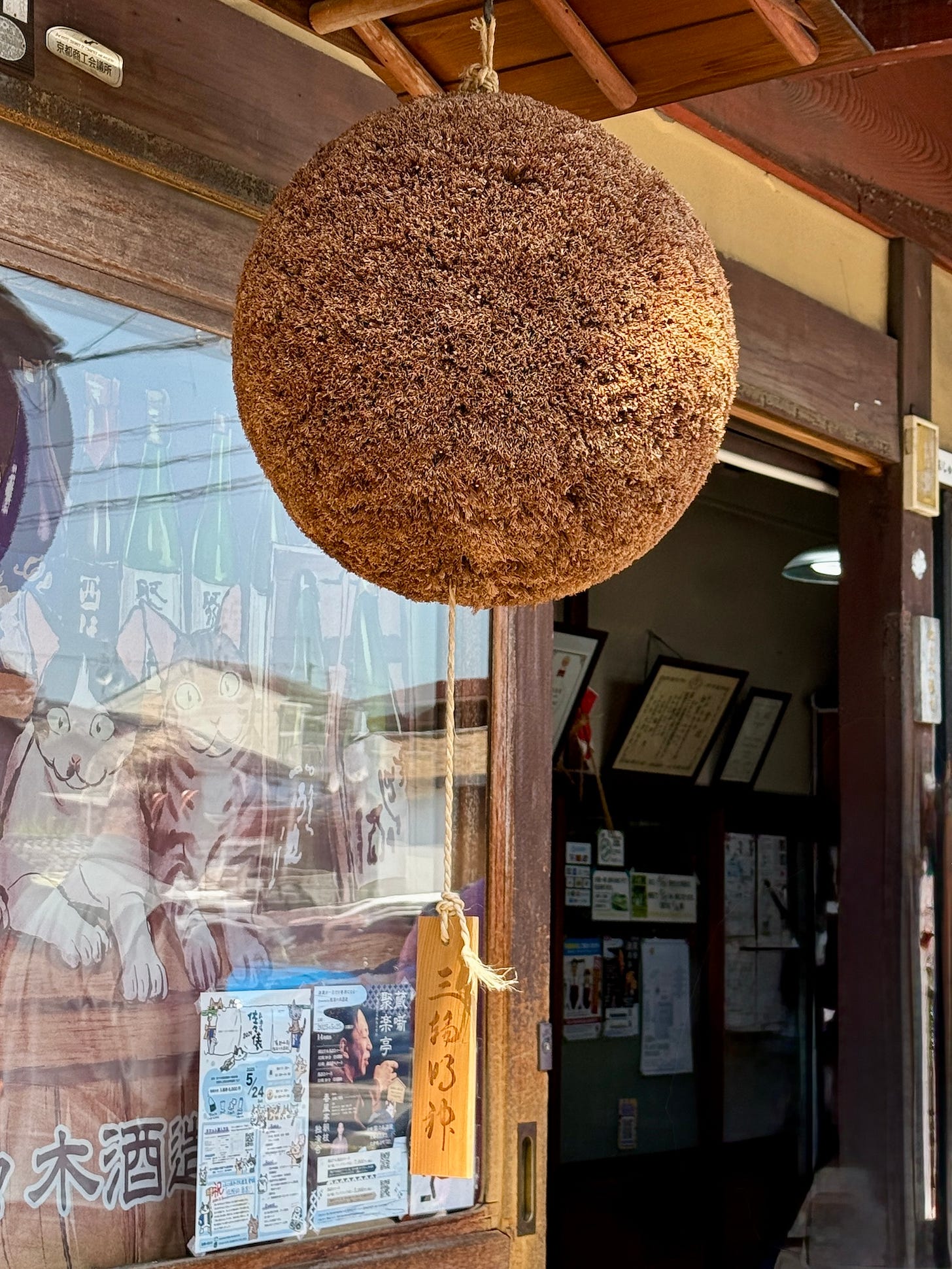
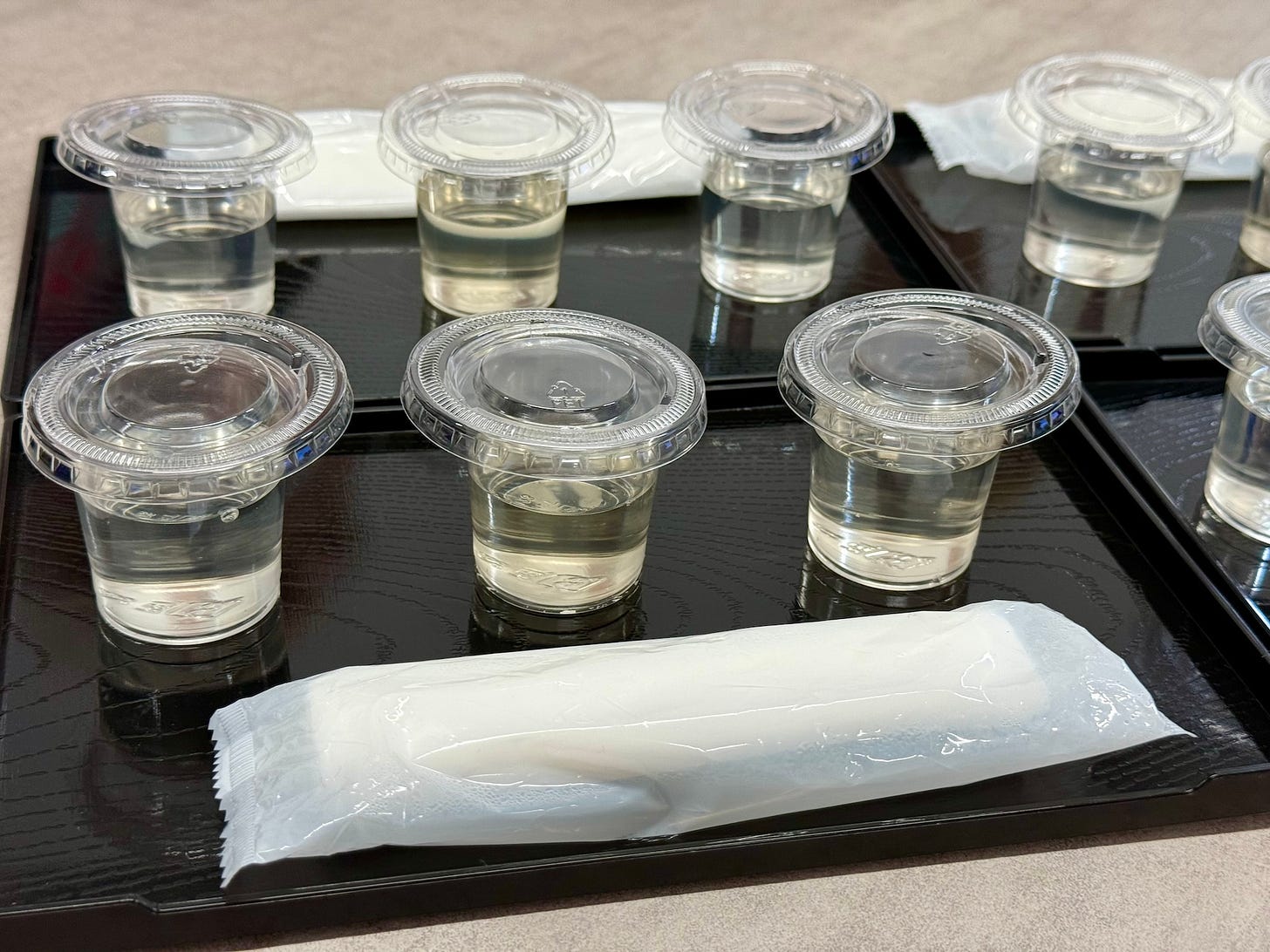
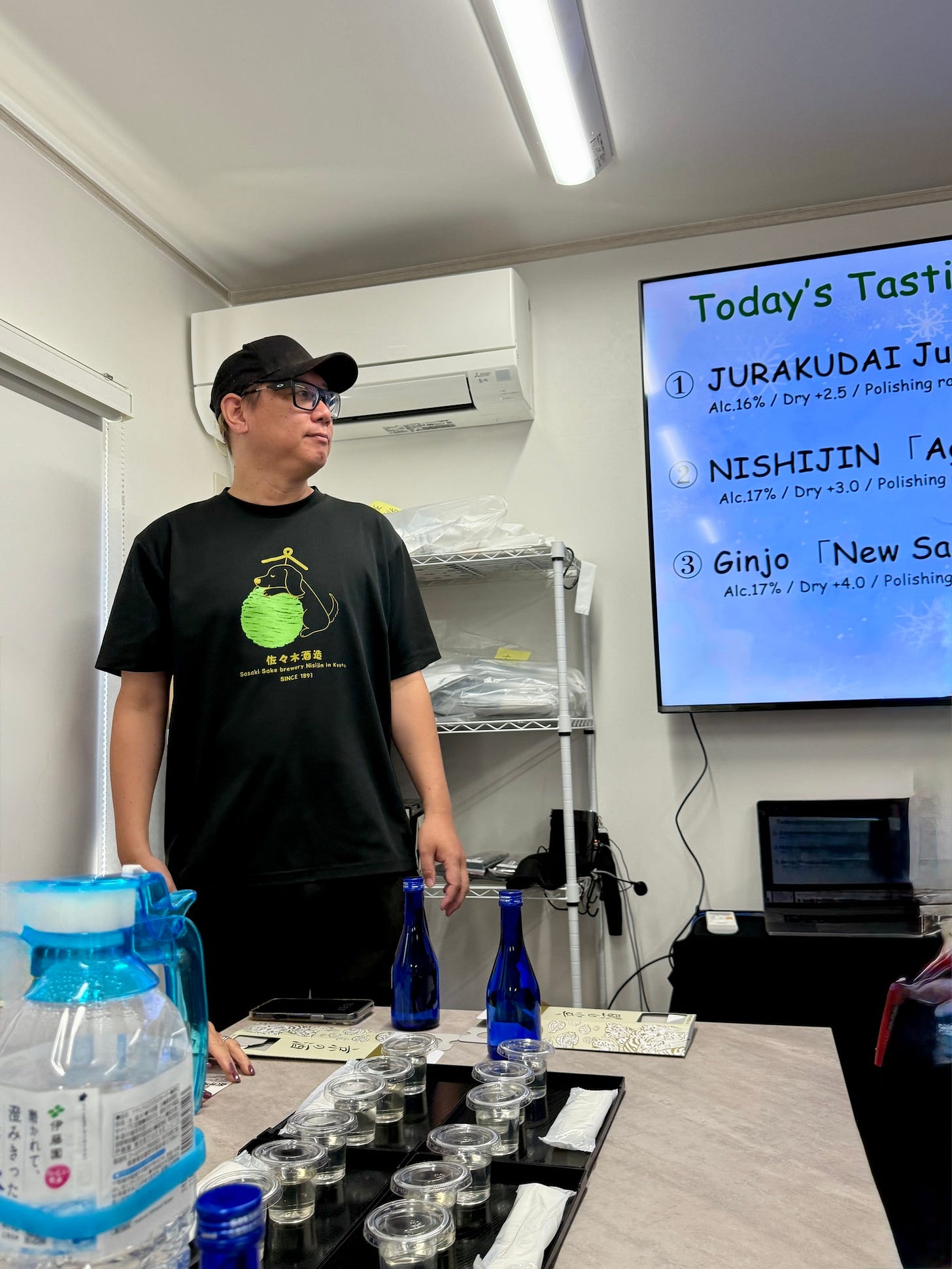
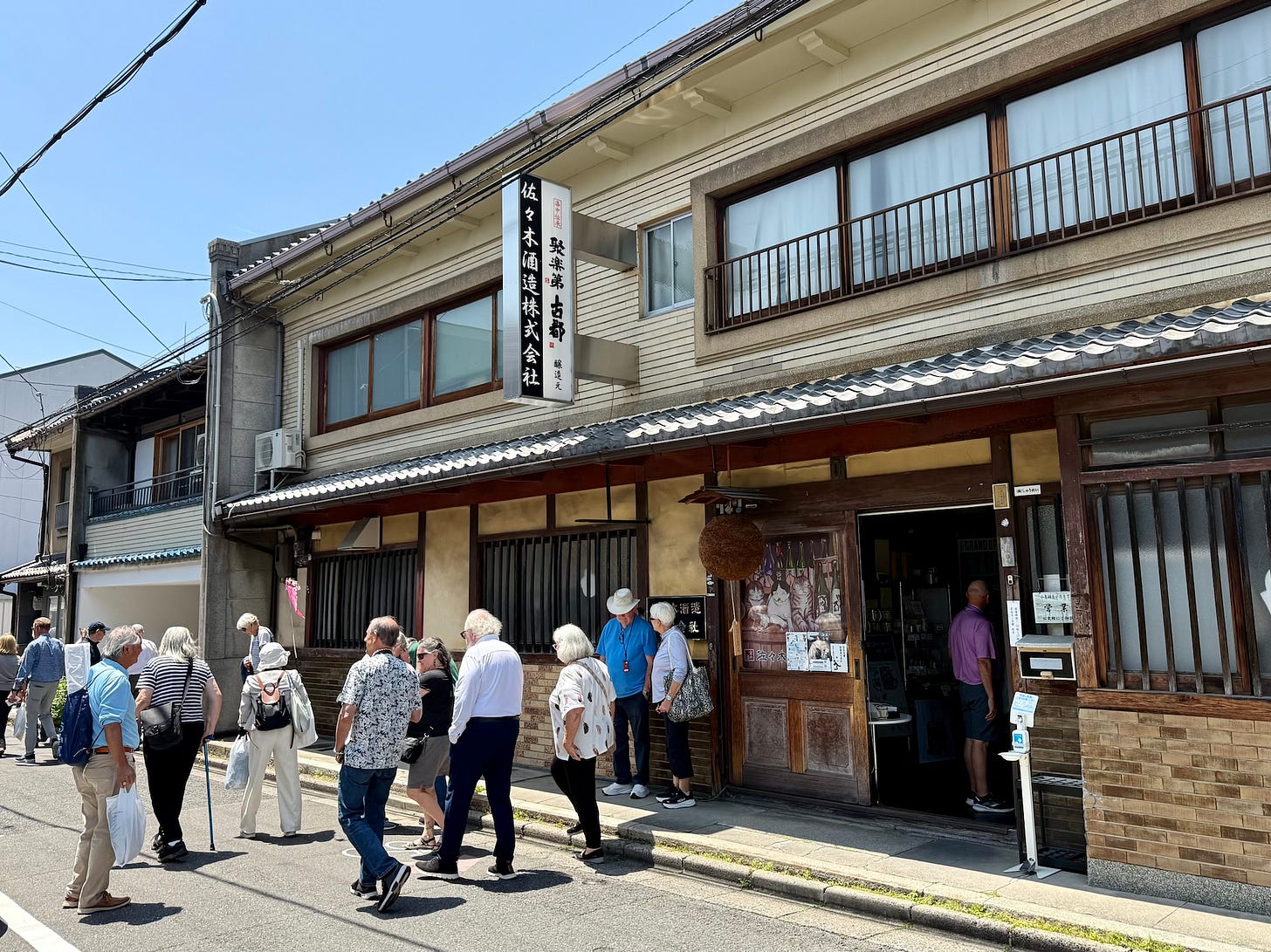
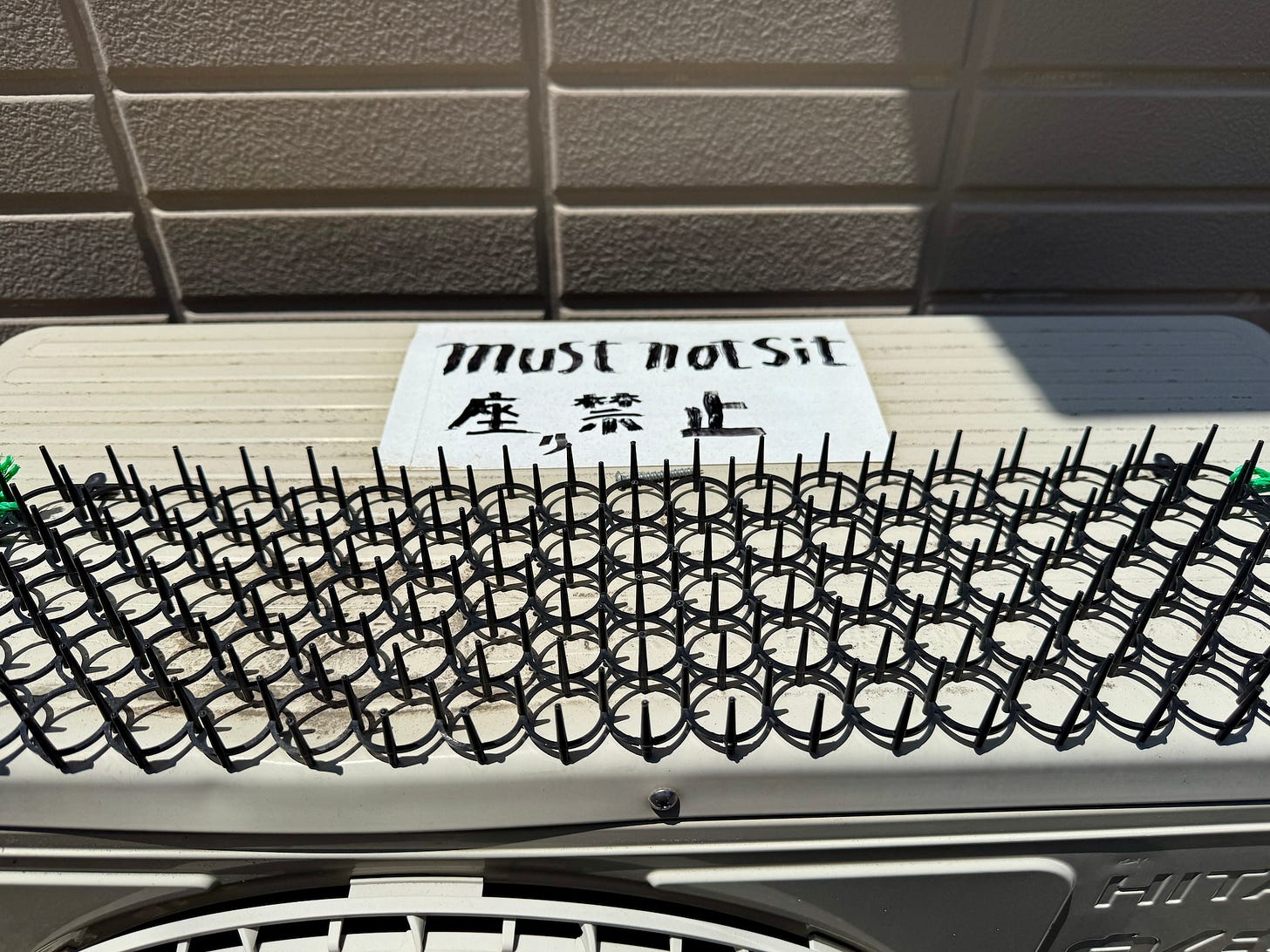
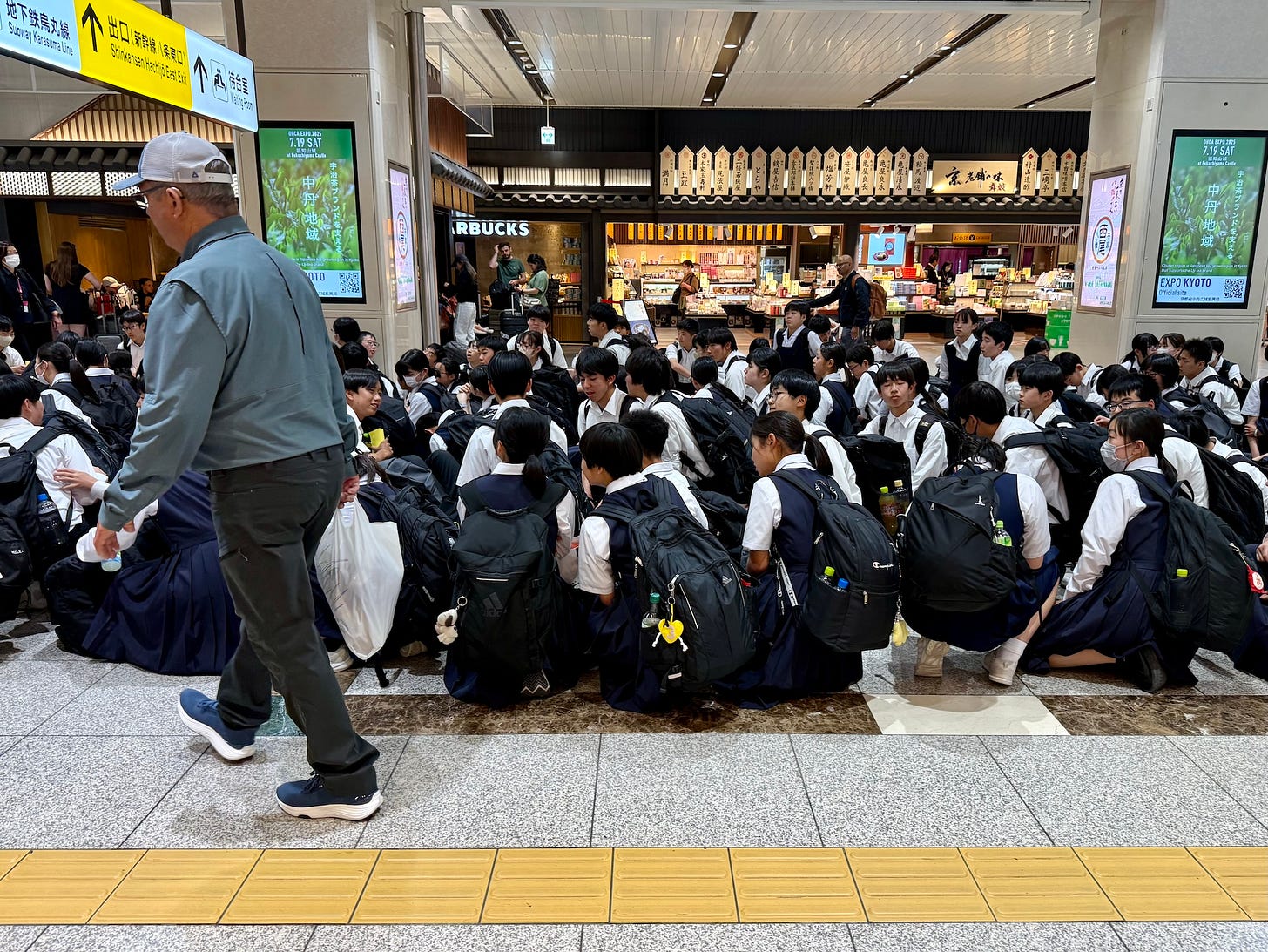

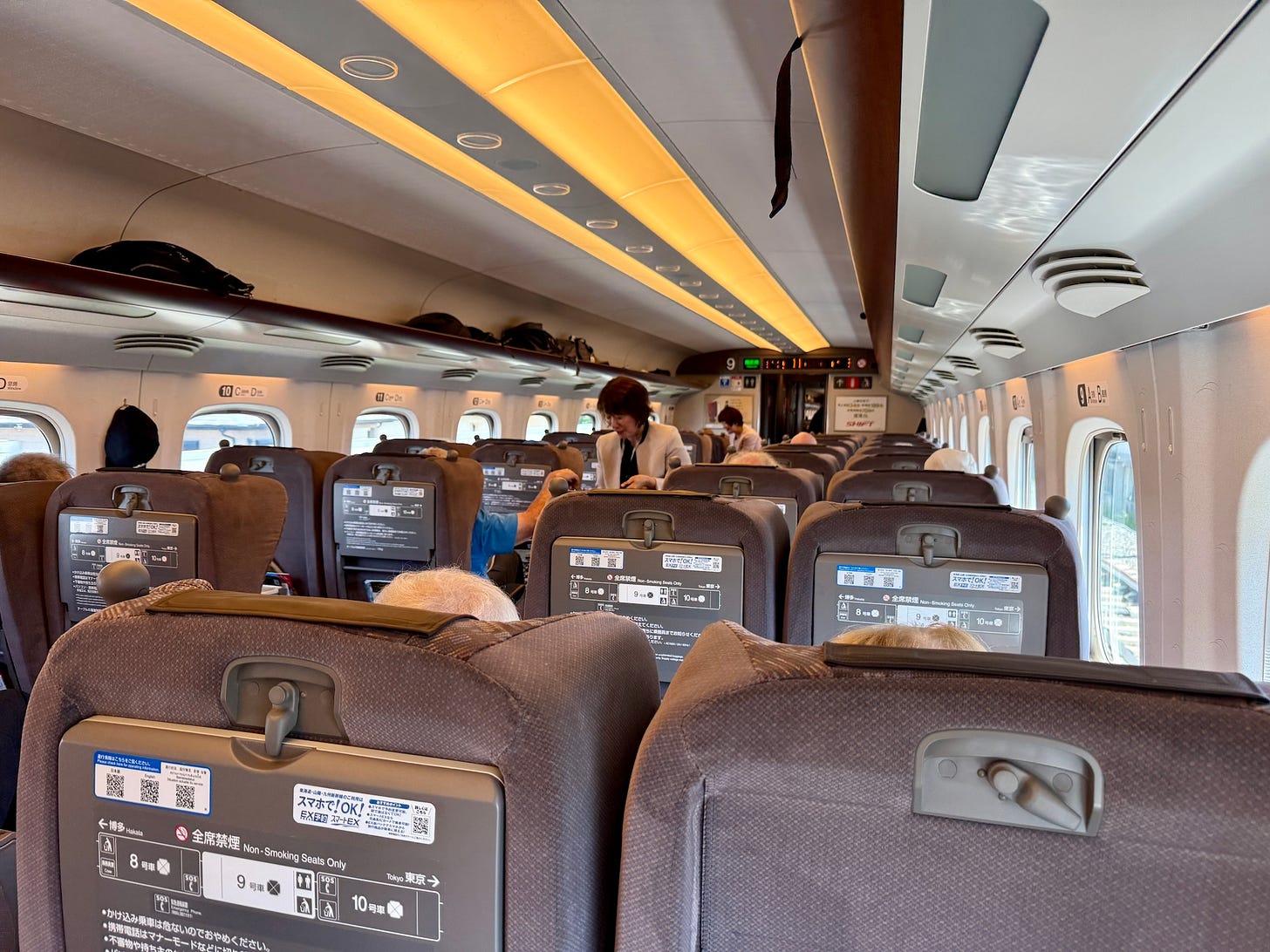
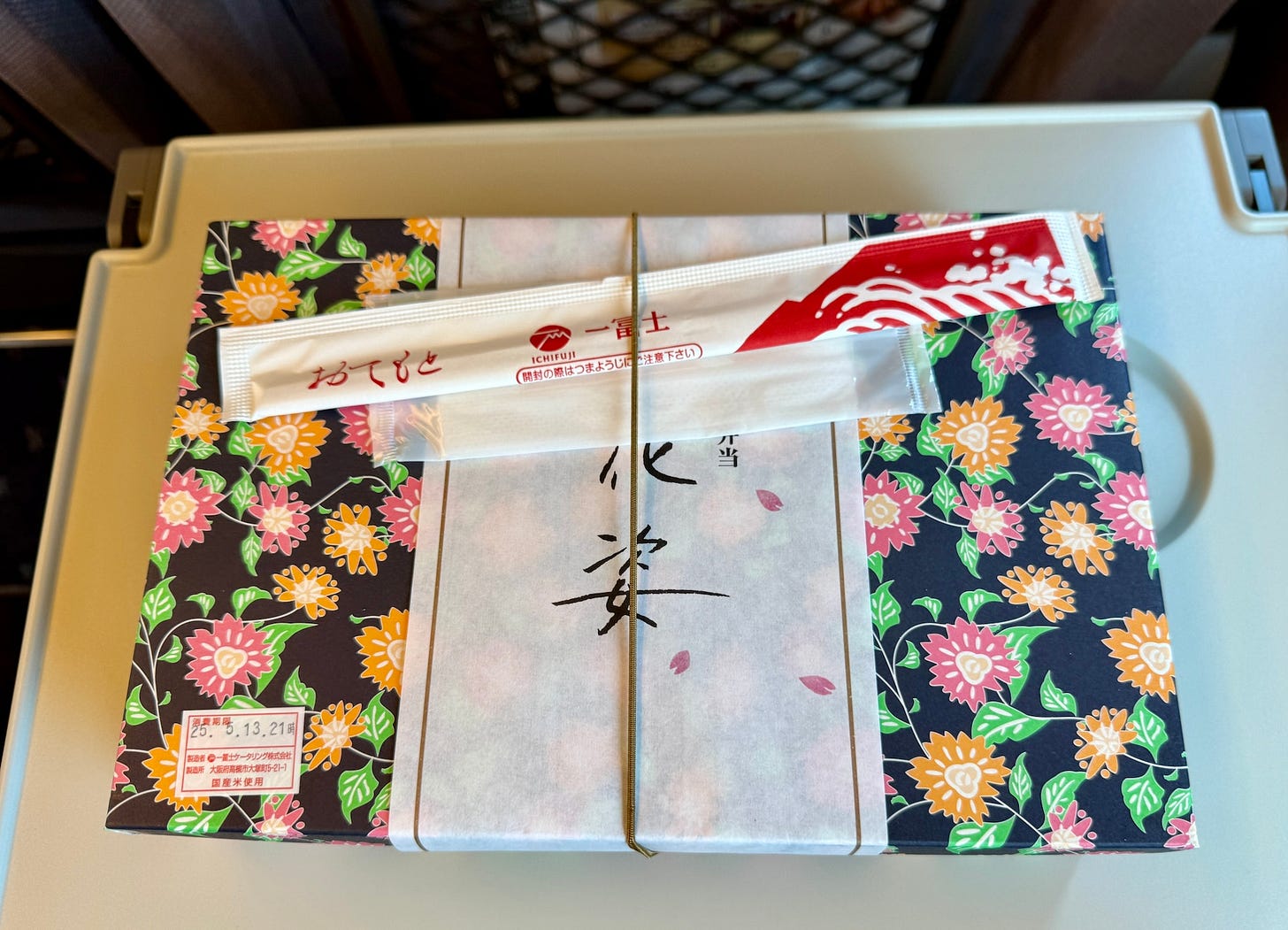
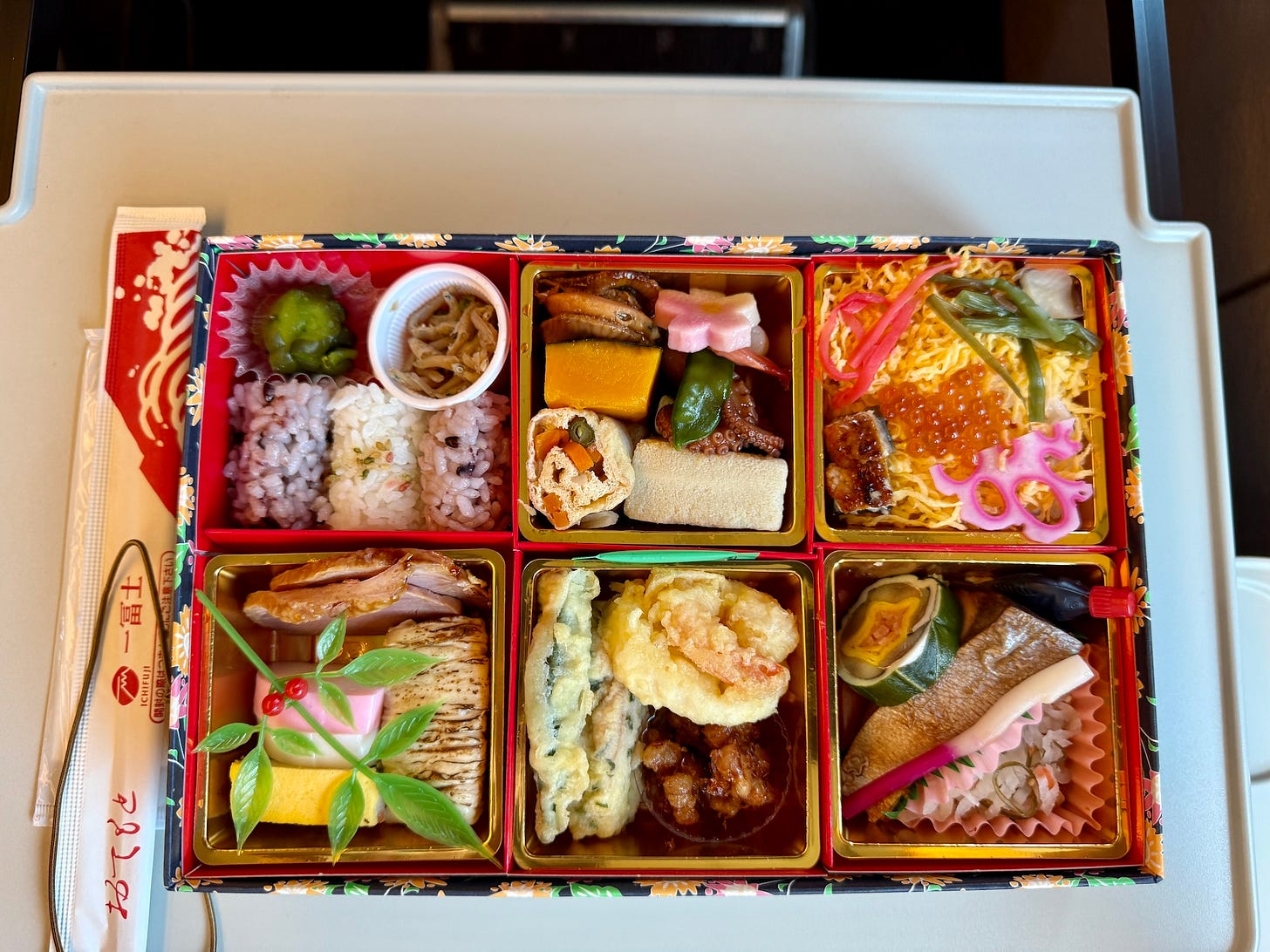
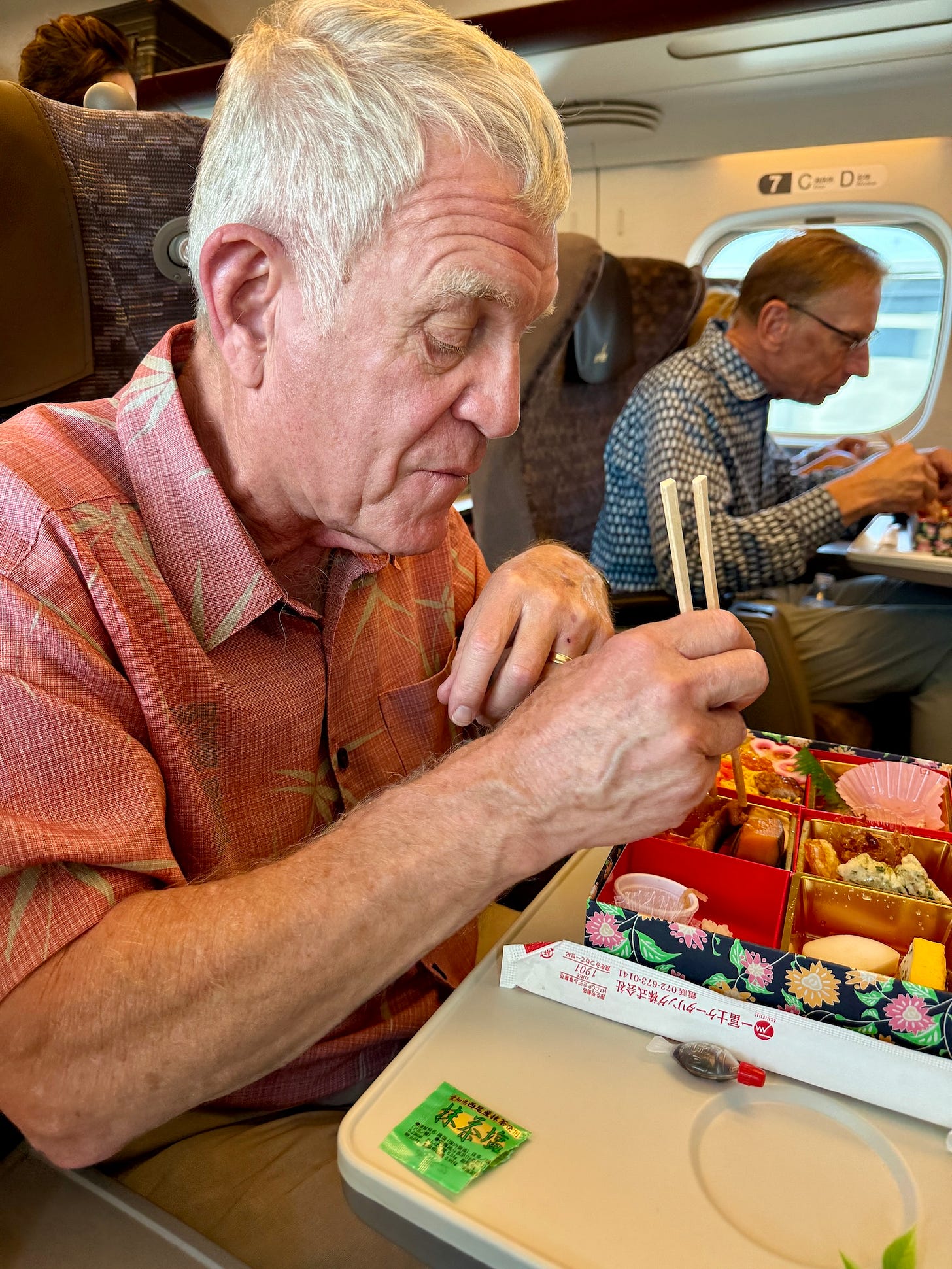
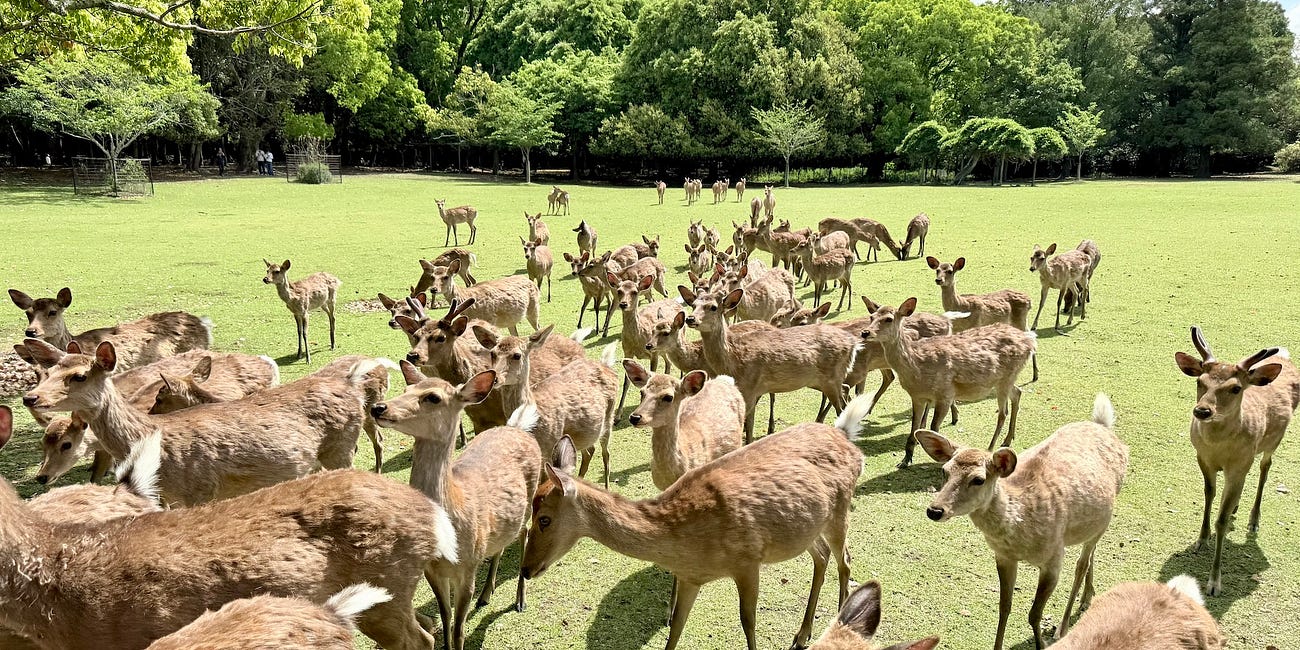

Oh my goodness! Was this your first train ride while on your world cruise? I don’t remember reading about it anywhere else so this was so fun for me. I love train rides. I would definitely have needed a chart but the bento box was beautiful! Why you had so many beautiful things to do, I really do think the bullet train might’ve been my favorite thing.
This was a fascinating overland excursion! Thank you to for taking us along!